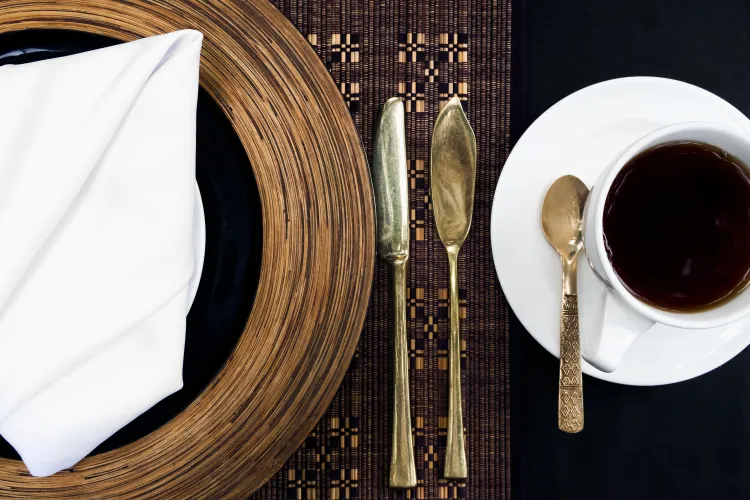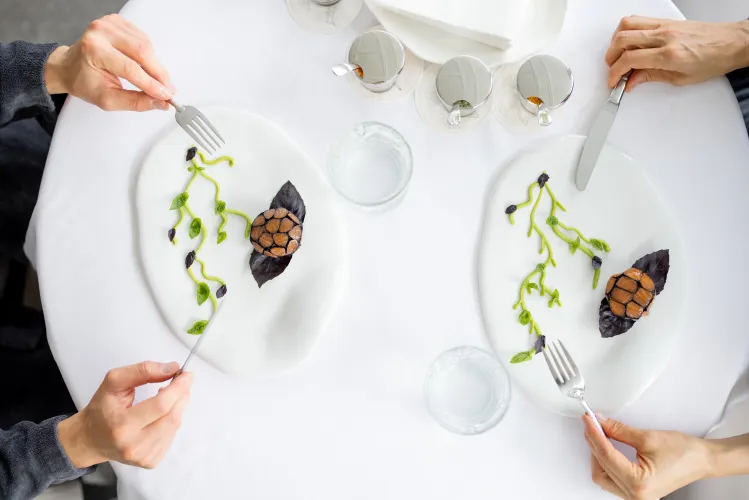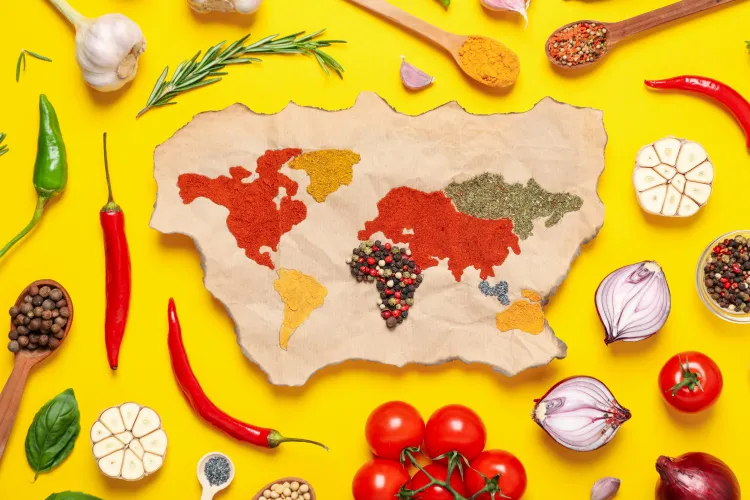Food nourishes our bodies, but it can also tantalize our senses and ignite our imaginations. The artistry behind a well-composed dish goes beyond just flavor; it's a visual symphony waiting to be devoured. Let's explore how culinary creations draw inspiration from the world of art, transforming a simple plate into a captivating palette.
The Canvas and the Plate:
The first step in any artistic endeavor is selecting the right canvas. For a chef, the canvas becomes the plate itself. Its size, shape, and color all play a role in the final composition. A wide, round plate offers ample space for expansive presentations, while a long, rectangular plate encourages a minimalist, linear approach. The plate's color can complement or contrast with the food, creating a harmonious or dramatic backdrop.
The Palette of Flavors and Colors:
Just as an artist uses a diverse palette of colors to bring their vision to life, a chef employs a variety of ingredients to create a symphony of flavors and hues. Vibrant vegetables, rich sauces, and contrasting textures all become tools for artistic expression. A drizzle of bright pesto adds a pop of green, while a dusting of paprika introduces a vibrant red. Edible flowers, with their delicate beauty, can add a touch of whimsy and elevate the visual appeal of the dish.
The Art of Presentation:
Presentation is paramount in transforming a plate into a work of art. Similar to how an artist arranges elements on their canvas, a chef carefully positions each ingredient for maximum impact. Balancing negative space with the food itself creates a sense of order and allows each element to shine. Swirls of sauce can mimic brushstrokes, while strategically placed herbs or edible flowers add a touch of three-dimensional interest.
Storytelling on a Plate:
Food has the power to tell a story. A dish can evoke memories of childhood meals, transport you to a specific culture, or even capture a season's essence. By carefully selecting ingredients and arranging them in a specific way, a chef can create a narrative on a plate. A seafood stew brimming with shellfish might whisper of seaside adventures, while a deconstructed dessert with playful textures could represent a whimsical dreamscape.
Beyond Aesthetics: The Multisensory Experience:
While visual presentation is crucial, a truly artistic culinary creation is a multisensory experience. The contrasting textures – the crispness of vegetables against the smoothness of a sauce – create a textural symphony in your mouth. Aromas emanating from the dish entice the sense of smell, while the symphony of flavors tantalizes the taste buds. This interplay of senses elevates the dining experience from a simple meal to a unique artistic encounter.
Bringing Art to Your Kitchen:
The good news is that anyone can embrace the artistic spirit in their kitchen. Don't be afraid to experiment with different colors, textures, and plating techniques. Utilize fresh, seasonal ingredients that boast vibrant colors. Research plating techniques online or in cookbooks for inspiration. Remember, a simple dish can be transformed into a work of art with a touch of creativity and attention to detail.
So next time you step into the kitchen, unleash your inner artist. Draw inspiration from the world around you, and transform your plate into a captivating palette that nourishes both the body and the soul.
 (1).webp)



